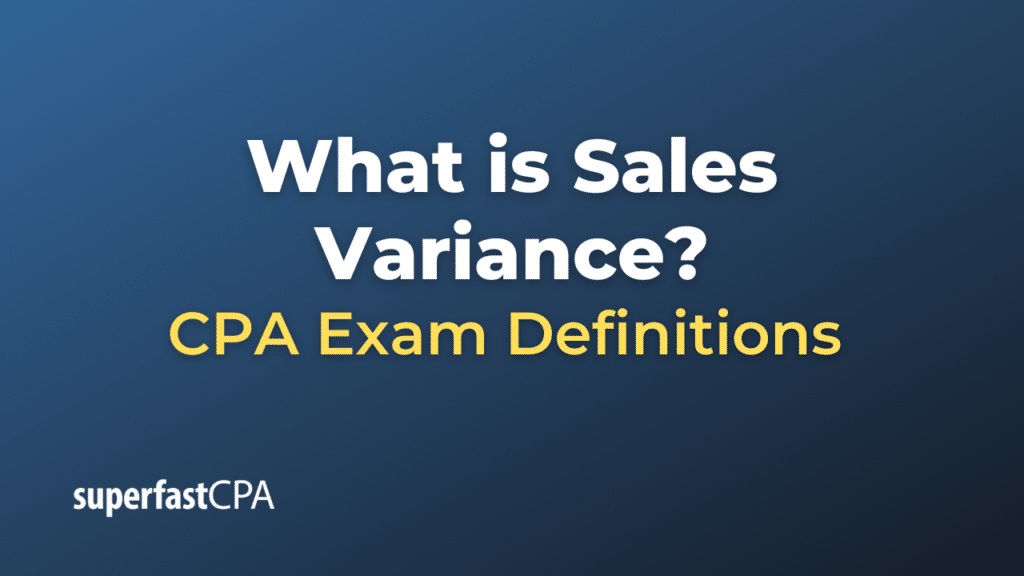Sales Variance
Sales variance is a measure used in management accounting to identify the difference between actual sales and budgeted or forecasted sales. It helps companies understand the reasons for the discrepancies between their projected sales figures and actual outcomes, allowing them to refine their strategies accordingly.
Sales variance can be divided into two primary components:
- Sales Volume Variance: This is the difference between the actual number of units sold and the budgeted number of units sold, multiplied by the budgeted sale price per unit. It helps in analyzing the impact of selling more or fewer units than planned.
- Sales Price Variance : This measures the difference between the actual selling price and the budgeted selling price, multiplied by the actual number of units sold. It helps in understanding the impact of selling products at prices different from what was planned.
Formula:
- Sales Volume Variance = (Actual Quantity Sold – Budgeted Quantity) x Budgeted Price
- Sales Price Variance = (Actual Price – Budgeted Price) x Actual Quantity Sold
Example of Sales Variance
Suppose a company named “TechGizmo” produces a particular model of headphones. For the upcoming quarter, TechGizmo has budgeted to sell 5,000 units of the headphones at a price of $50 each. However, at the end of the quarter, the company discovers it has sold only 4,500 units, but at a higher price of $55 each.
Step 1: Calculate the Budgeted Sales and Actual Sales
- Budgeted Sales = 5,000 units x $50 = $250,000
- Actual Sales = 4,500 units x $55 = $247,500
Step 2: Break down the variances
- Sales Volume Variance:
= (Actual Quantity Sold – Budgeted Quantity) x Budgeted Price
= (4,500 units – 5,000 units) x $50
= -500 units x $50
= -$25,000 (Unfavorable, because they sold fewer units than expected) - Sales Price Variance:
= (Actual Price – Budgeted Price) x Actual Quantity Sold
= ($55 – $50) x 4,500 units
= $5 x 4,500 units
= $22,500 (Favorable, because they sold each unit at a higher price than planned)
Step 3: Analyze the Overall Sales Variance
- Overall Sales Variance = Actual Sales – Budgeted Sales = $247,500 – $250,000 = -$2,500 (Unfavorable)
Conclusion:
In this scenario, even though TechGizmo managed to sell the headphones at a higher price than planned (a favorable price variance), they didn’t sell as many units as they expected (an unfavorable volume variance). The net effect led to an overall sales variance of -$2,500, meaning TechGizmo’s actual sales were $2,500 less than they had budgeted for.













